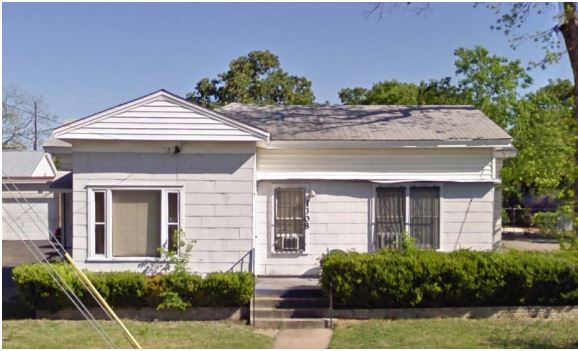House, not history, derails preservation bid
Friday, May 6, 2016 by
Elizabeth Pagano In order for a building to qualify for historic landmark status in Austin, it must meet two or more of the local historic designation criteria. That process can be complicated, but there are also issues that even a layman can understand with ease. As one East Austin case illustrated recently, it also must be a building worth preserving.
Last month, Historic Landmark Commissioners initiated historic zoning on the house at 1308 E. 12th St Since then, the city’s Historic Preservation Officer Steve Sadowsky researched the history of the house, and determined that it was probably first built in 1897, despite its appearance. That, explained Sadowsky, was the reason that he was declining to offer a recommendation about whether it should be designated historic.
The home has strong ties with Austin’s African-American community, and Alice King, who is associated with the King-Tears Mortuary and Huston-Tillotson University, among other things. That, in Sadowsky’s opinion, could meet required criteria for historic association and community value. But changes to the home’s exterior – including the removal of a porch and modifications to features like the windows — raised questions about what history, exactly, would be preserved in a physical sense.
“What I’m concerned about is not knowing when these modifications took place. I think it’s safe to say that they happened in the historic period — I think they happened before 1966, just judging from what they look like, but I can’t confirm that,” said Sadowsky. “I’m hesitant to recommend a house for historic zoning that doesn’t retain its historic appearance.”
He said if there was “solid proof” that the house looked the way it does now when King purchased it, it would be a good candidate for historic zoning. “It’s not pretty, but (it would) meet our criteria,” he said.
Commissioner Arif Panju focused on the fact that there were “some serious issues” with the house.
“This is an expensive undertaking to begin with, and I’m concerned that we would be burdening the homeowner without any strong foundation,” said Panju.
Commissioner Terri Myers acknowledged that it was rare to agree with Panju, but she also had concerns. “If they were to restore it, what period would they restore it to?” She pointed out that if the associations were with King, then it might be restored to the 1953 appearance, but the original appearance was also important. She raised the question of whether the original owner would recognize the house.
“I would put to you that the original builder or the original owner would not recognize this,” said Myers. “I think this doesn’t meet the architectural criteria… If this house were restored to its 1953 appearance, would we really consider this a landmark?”
As there are no other homes associated with Alice King, Commissioner Michelle Trevino suggested the commission (or city) explore alternative tools for commemoration, like a historical marker, which “does not tie the owner to the restoration of this house to an ambiguous period of integrity or historical significance.”
In the end, commissioners opted to release the demolition permit, on the condition that the owners apply for a historic marker to commemorate Alice King as the owner and proprietor of King-Tears Mortuary, and resident of the home. The motion passed unanimously.
Photo courtesy of the city of Austin
You're a community leader
And we’re honored you look to us for serious, in-depth news. You know a strong community needs local and dedicated watchdog reporting. We’re here for you and that won’t change. Now will you take the powerful next step and support our nonprofit news organization?











